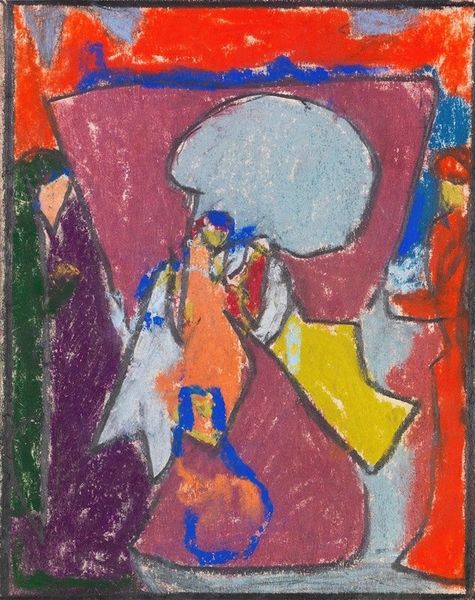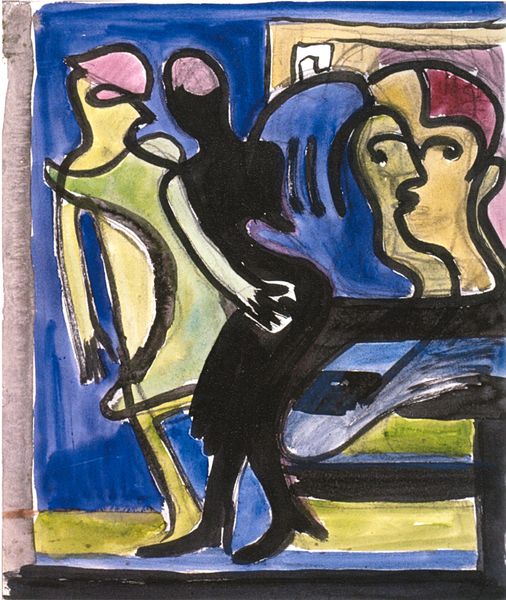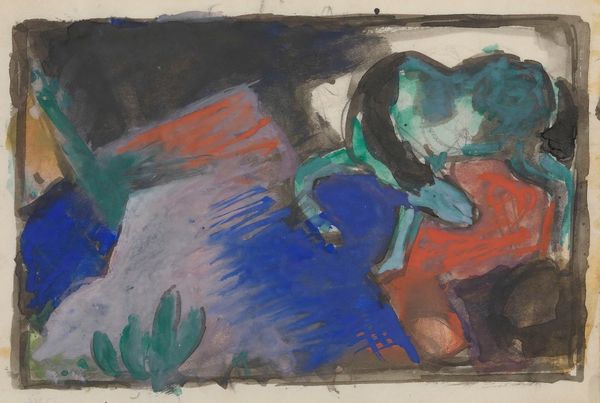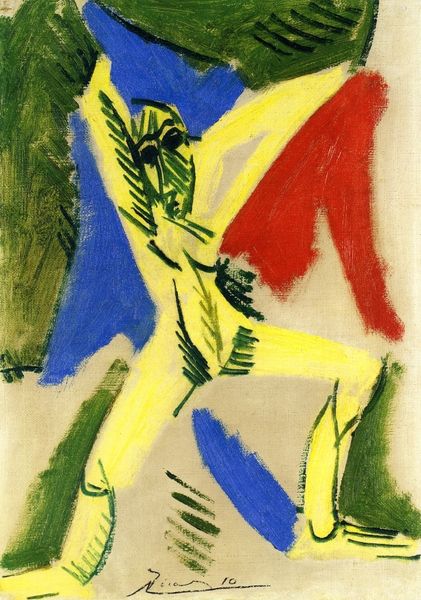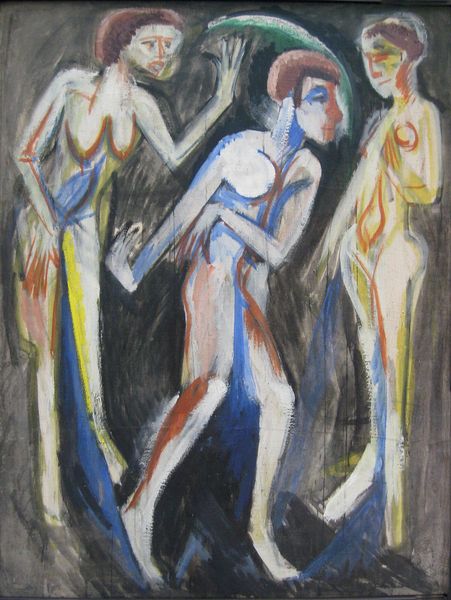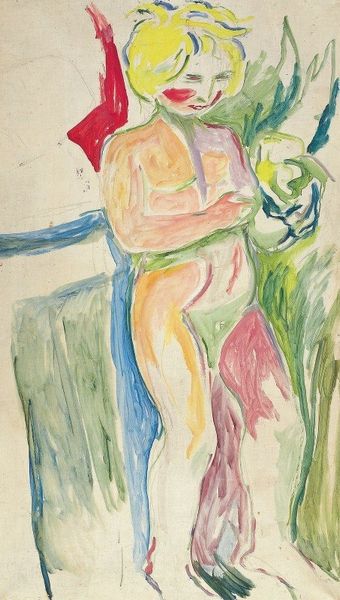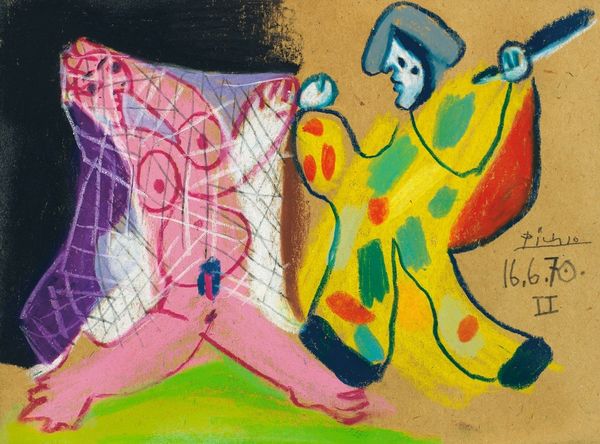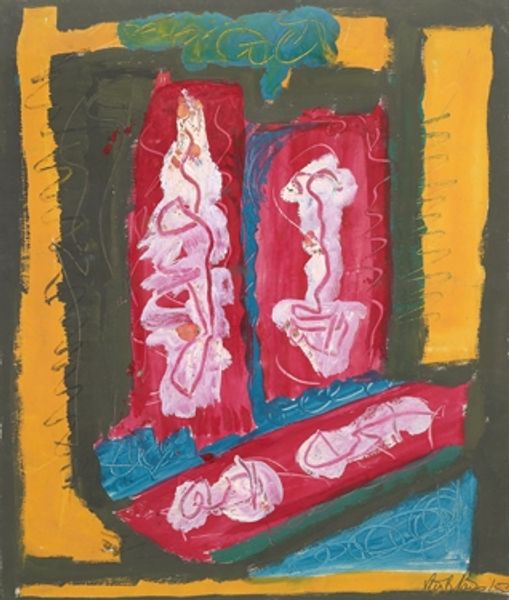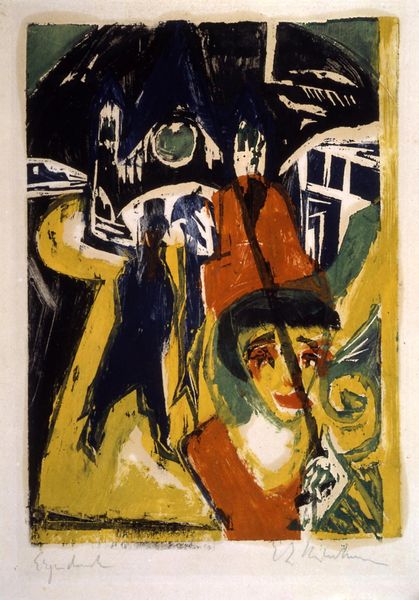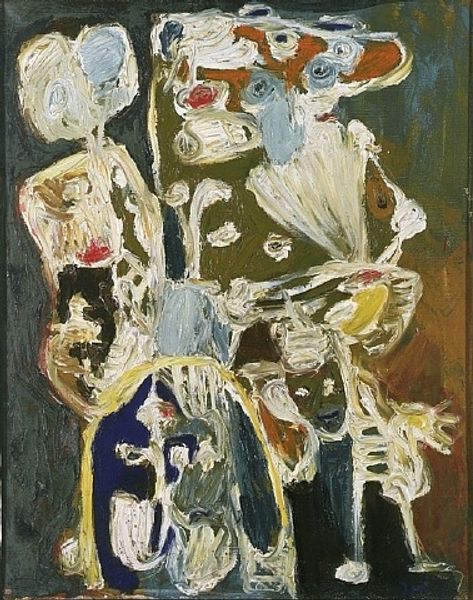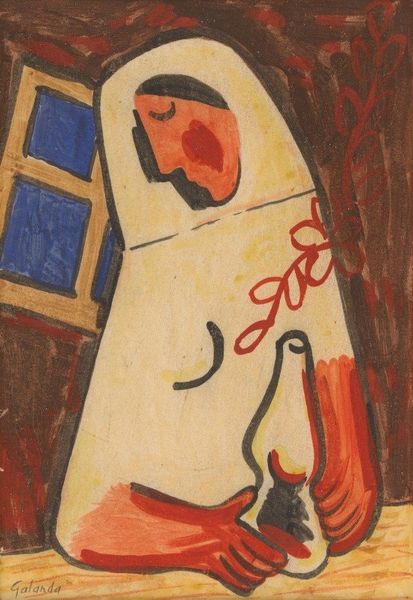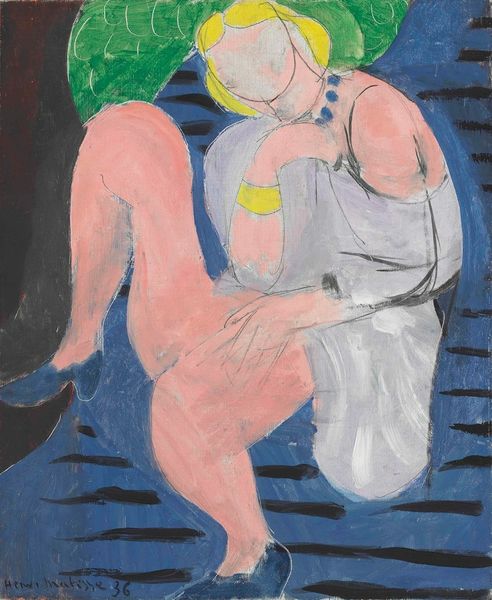
Copyright: Henri Matisse,Fair Use
Editor: Here we have Matisse's "Le Chant," created in 1938, using oil paint. I'm struck by the bold lines and the layering of forms, it almost feels like a puzzle of shapes and colours. How do you interpret this work, considering its composition? Curator: The compositional structure is indeed fascinating. Note the way Matisse divides the pictorial space into distinct, almost abstract, zones of color. How do you perceive the relationship between these color fields – the blues, yellows, greens and reds – and the figures depicted? Are they harmoniously integrated or intentionally dissonant? Editor: I see a bit of both, actually. There's a definite harmony in the palette, yet the boundaries between the zones are so sharp, creating a tension, a visual vibration, almost. It challenges my eye. Curator: Precisely! This tension is crucial. It exemplifies Matisse's exploration of color and form, not as representational tools, but as structural elements. The lines aren’t defining form so much as directing visual pathways around the canvas. Consider how the seemingly arbitrary application of color contributes to the overall structure. Editor: That's interesting! I always assumed color was there to fill the forms, but here it really *creates* them. I thought that by removing detail, Matisse might simplify things, but it seems to create a complex visual experience that relies on these subtle relationships. Curator: Yes, and how does the interplay of line and colour, and shape make you feel as a whole? Editor: I see a great emphasis on these artistic decisions over making real people, the flatness makes the forms come forward, it is really about the choices that the artist made while painting. I definitely have a different perspective on "Le Chant." Thank you! Curator: Indeed. Understanding these choices reveals the power of formalism in deconstructing and understanding artistic intent.
Comments
No comments
Be the first to comment and join the conversation on the ultimate creative platform.
